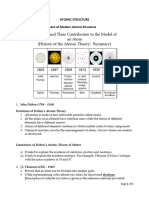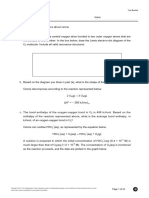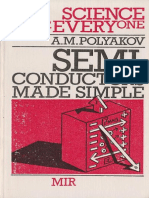0% found this document useful (0 votes)
17 views3 pagesAtomic Structure
The document outlines the evolution of atomic models, starting from Dalton's Atomic Theory to the Quantum Mechanical Model, highlighting key features and limitations of each model. It explains concepts such as quantum numbers, electronic configuration, and atomic spectra. The notes serve as a comprehensive guide for Class 11 NCERT syllabus on atomic structure.
Uploaded by
kakhaghaabcCopyright
© © All Rights Reserved
We take content rights seriously. If you suspect this is your content, claim it here.
Available Formats
Download as PDF, TXT or read online on Scribd
0% found this document useful (0 votes)
17 views3 pagesAtomic Structure
The document outlines the evolution of atomic models, starting from Dalton's Atomic Theory to the Quantum Mechanical Model, highlighting key features and limitations of each model. It explains concepts such as quantum numbers, electronic configuration, and atomic spectra. The notes serve as a comprehensive guide for Class 11 NCERT syllabus on atomic structure.
Uploaded by
kakhaghaabcCopyright
© © All Rights Reserved
We take content rights seriously. If you suspect this is your content, claim it here.
Available Formats
Download as PDF, TXT or read online on Scribd
/ 3



















































































